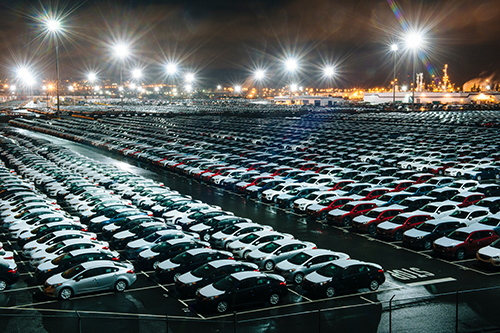The COVID-19 Price Surge
The dramatic increase in used car prices during the COVID-19 pandemic can be traced back to a few key issues that disrupted the entire automotive market.
- Supply chain disruptions: A lack of raw materials in the auto sector led to a shortage of new cars, driving demand for used vehicles. Factories shut down, workers stayed home, and essential parts—particularly semiconductor chips—became scarce.
- Increased demand for used cars: With fewer new cars available, consumers turned to the used car market as an alternative. At the same time, demand for cars increased as people sought out personal vehicles to avoid public transportation during the pandemic.
- Rental car companies buying used cars: During the pandemic, rental car companies sold off large portions of their fleets to cut costs. However, as travel rebounded, they needed to rebuild their inventories and turned to the used car market, further driving up demand and prices.
Why Used Car Prices Are Coming Down Now
While the used car market reached record-high prices, the situation is now changing. Several factors are contributing to the decline in used car prices, bringing some relief to buyers.
- Supply chain issues stabilizing: One of the biggest reasons prices are coming down is that supply chains are returning to normal. Factories have resumed production, and car companies are working hard to meet new-car demand, easing the pressure on the used car market.
- Economic uncertainty: As inflation rates rise and the cost of living increases, many consumers are becoming more cautious about large purchases, which is leading to a decrease in demand for big-ticket items, including used cars.
- Decline in demand for cars: With gas prices high and other factors at play, some people are choosing to delay their purchases, which decreases demand.
- Rental companies restocking: The return of rental companies to the used car market to restock their fleets has subsided, further reducing demand and prices.
- Levels of trade-ins rising: New car supply has improved, so consumers who were waiting for new cars are now trading in their old vehicles, adding supply to the used car market and easing prices.
What This Means for Buyers
For buyers who were priced out of the market during the pandemic, this is welcome news. Used car prices are becoming more reasonable, and there’s now a larger selection of vehicles to choose from. Here are a few key takeaways for prospective buyers:
- More Bargaining Power: With used car lots filling up and demand cooling, buyers may find themselves with more negotiating power. Dealerships are eager to move inventory, which means you might be able to secure a better deal than in the past couple of years.
- Greater Selection: The overflow of inventory means that buyers now have more options when it comes to make, model, and features. Whether you're looking for a compact car, SUV, or truck, there’s likely a wider range to choose from than in the past.
- New or Used? With new car production ramping up, the price gap between new and used vehicles may start to shrink. For some buyers, it might be worth comparing the cost of a new car to a used one, as the difference might not be as significant as it was during the height of the supply chain crisis.
Conclusion
The used car market is returning to more balanced levels after a period of extreme highs. While the supply chain issues caused by COVID-19 created a surge in used car prices, the situation has now reversed as inventory levels rise and demand decreases. If you’re in the market for a used vehicle, now might be a great time to shop around, as you’ll likely find better deals and more selection than you would have during the peak of the pandemic.
